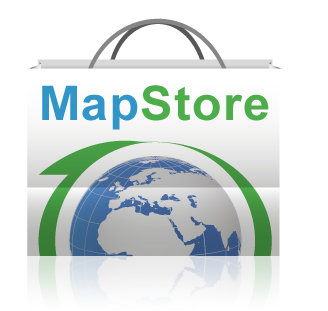Open Source GIS
I was very passionate about Geography when in school which led to my choice of courses at the University, Geospatial Engineering. In other institutions it is referred to as Geomatics Engineering and my definition of it is a discipline that blends several sub-disciplines that include Surveying, Global Positioning Systems (GPS), Earth Observation (EO), Geographic Information Systems (GIS) and borrows some concepts from other Engineering fields and Computer Science. My bias has always been on the disciplines incorporating computer concepts such as GIS and EO. Later on, as I started interacting with professionals in the local industry (Kenya), I used to hear terms like "enterprise", "COTS", "Free and Open Source" among others being thrown around and at the time did not understand what they meant. I had the privilege of starting my career in GIS at ESRI Eastern Africa local point of presence for Environmental Systems Research Institute (ESRI) where I learnt using their commercial GIS software that is actually the most common in corporate GIS up to now (the time of writing this artice). This is my short version of my entry into the world of Geospatial Sciences which I still attribute to my previous and current successes and achievements. Let us outline some key differences between Open Source GIS and Commercial GIS (Commercial off-the-shelf, COTS) software below.
Learning GIS About Open Source GIS
Free software The term "GIS" (Geographic Information System) refers to the application of open source software frameworks and tools for the analysis, mapping, and visualization of geospatial data. Recall definition of a geographic information system, or GIS, from my previous blog post. Open source development is the foundation upon which open source GIS software is created. As a result, anybody can see, alter, and share the product's source code but within some guidelines. This open strategy promotes teamwork, creativity, and community-driven growth. You can refer to more details about Open Source in the Open Source Initiative website.
A variety of tools and functionalities are offered by open source GIS software for working with geospatial data. These tools consist of:
- Geoprocessing and automation: Open source GIS solutions frequently come with scripting and automation features, enabling users to design unique workflows, automate time-consuming operations, and link GIS procedures with other programs or systems.
- Web mapping: Frameworks and tools for creating interactive web mapping applications are also included in open source GIS software. These tools make it possible to create web-based maps, share geospatial data, and work together online.
- Data collection and management: Open source GIS software enables you to collect, import, and administer a variety of geographic data types, including topographic information, GPS data, satellite imagery, and administrative boundaries.
- Spatial Analysis: For executing spatial searches, overlaying and intersecting datasets, proximity analysis, spatial statistics, and modeling, open source GIS tools provide strong analytical capabilities.
- Cartography and Visualization: Using various data layers, symbology, labeling, and thematic mapping techniques, open source GIS software enables the development of maps and visualizations. It enables alteration and management of the design and arrangement of maps.
Open Source GIS Software
Several well-liked open source GIS tools and frameworks are:
- QGIS: A robust desktop GIS program with a wealth of tools for editing, analyzing, and visualizing data. QGIS is a powerful and versatile GIS program that is available for Windows, macOS, and Linux. It is known for its user-friendly interface and its wide range of features. It comes shipped with rich GUI tools and GIS functionlities which are powered by Python and C++. QGIS has a Desktop and Server software. For more detail, refer to the QGIS website.
- GRASS GIS: A complete GIS software package for managing, analyzing, and modeling geographical data. GRASS GIS is a long-established GIS program that is known for its powerful spatial analysis capabilities. It is available for Windows, macOS, Linux, and Unix. It can also be added as a support plugin for QGIS Desktop. For more details on GRASS-GIS, refer to the GRASS-GIS website.

- PostGIS: An open source add-on for PostgreSQL that provides spatial querying and analysis as well as the addition of support for spatial data types. By adding functionality for storing, indexing, and querying geographic data, PostGIS expands the capabilities of the PostgreSQL relational database. Please refer to the PostGIS website for more detail.

- GeoServer is used to serve/distribute geospatial data and services online utilizing OGC (Open Geospatial Consortium) protocols. Creating interactive online maps that can be included into websites is made possible by the JavaScript package Leaflet. Refer to GeoServer documentation for more detail.

- MapStore is a web-based platform for producing, organizing, and sharing geospatial data and maps that is provided by open source GIS software. It supports data visualization, geospatial data management, query and analysis, user collaboration, and API integration and extensions that are just a few of the features and skills it offers for creating interactive web mapping applications. MapStore documentation provides more information on this software.

- GeoNode s an open-source geospatial content management system (CMS). It is a web-based application and platform for developing geospatial information systems (GIS) and for deploying spatial data infrastructures (SDI). GeoNode is built on top of the Django web framework and uses the GeoExt JavaScript library for map visualization. Read more about GeoNode from my GeoNode tutorial.

Please note that these are just the common few. There are many open source software out there which one can research on. In conclusion, when choosing an open GIS software program, it is important to consider your specific needs and requirements. Some factors to consider include:
- The type of data you will be working with
- The features you need
- The operating system you use
- Your budget etc.
Commercial GIS
We cannot highlight about open source GIS software without mentioning their counterparts, the commercial GIS software. This is a kind of commercially produced and distributed geographic information system (GIS) software.
Although commercial GIS software frequently costs more than open source GIS software, it equally provides a similar if not less than the variety of features and capabilities. We will not dwell much on the enterprise GIS software but here are some examples of them:
Commercial GIS Software
Some of the most popular commercial GIS software packages worth mentioning include:
- ArcGIS by ESRI
- AutoCAD Map 3D by Autodesk
- Bentley Map by Bentley Systems
- Smallworld by Hexagon Geospatial
- Intergraph Geomedia
Many different entities, including governments, companies, and non-profits, employ commercial GIS software. It serves a number of functions, such as:
- Surveying and mapping
- Considering the environment
- Disaster planning in urban areas
- Military strategy
- Enterprise intelligence
For businesses that need to handle and analyze spatial data, commercial GIS software can be an invaluable resource. However, before selecting a commercial GIS software package, it's crucial to carefully analyze the requirements of your firm. The following are some things to take into account while selecting a commercial GIS software package:
- Volume and sophistication of spatial data within your organization
- Particular actions you must carry out with your spatial data
- Money you have to spend
- Amount of assistance you require
After taking them into account, you can start comparing various commercial GIS software products. Before choosing one, it's crucial to test out other options.
Conclusion
With the highlighed key points in both open source and commerical GIS, there are pros and cons of either even from my own experience of interacting and even to some extent of developing or customizing them. I will summarize what each offers.
When it comes to open source GIS, you will get the following: Relief on Costs, Flexibility and Customization, Open Source Community and Collaboration, and Learning Resources.
And on the commercial (COTS) GIS, you will get Technical Support, Training and Certification, Integration with Proprietary Systems and Advanced Functionality.
Related articles
Comments
Joseph Kariuki on May 30, 2023
Thanks for your compliment Louis. I will keep on posting occasionally.
Louis on May 30, 2023
Very Informative read. Thanks for the content.

Hi, thanks for visiting! My name is Joseph Kariuki, a software developer and this is my website. I am consistently seeking solutions to various problems using coding. This site does not contain ads, trackers, affiliates, and sponsored posts.
DETAILS
Published: Feb. 9, 2023